SEO
Internal Linking Guide: Actionable Tips, Strategies, and Tools
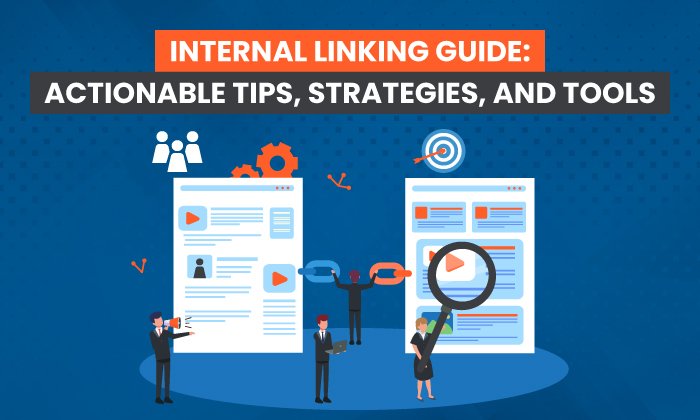
Internal links are a crucial part of a successful SEO strategy.
Small but mighty, simple yet complex, internal links help navigate users through your digital content and give search engine crawlers information about how your website works.
Internal links are found on almost every page on the internet. You’re probably already using them, even if you don’t know it. (Hint: there’s a few included in this intro,)
If you want to optimize your content for SEO, you need to understand how internal links work, where to place them, and why they matter.
In this post, we’ll dive into internal linking and cover best practices.
What Is Internal Linking?
Internal links are links from one page to another within a single domain.
These are different from external links, which point to pages on a different website.
Every website with more than one page should be connected through internal linking.
Think of your website’s home page. In the top navigation, you likely have a menu that links to other internal pages. This could be your About, Shop, and Contact pages.
This internal linking structure is essential for SEO because it establishes a site architecture and improves your link equity.
Having multiple web pages attached to a singular domain improves your chances of being ranked by allowing search engine crawlers to index more content.
Internal linking is a simple issue of site design and architecture, and the search engines expect it. All websites have a design and architecture that keeps them structured logically, such as this common silo model.
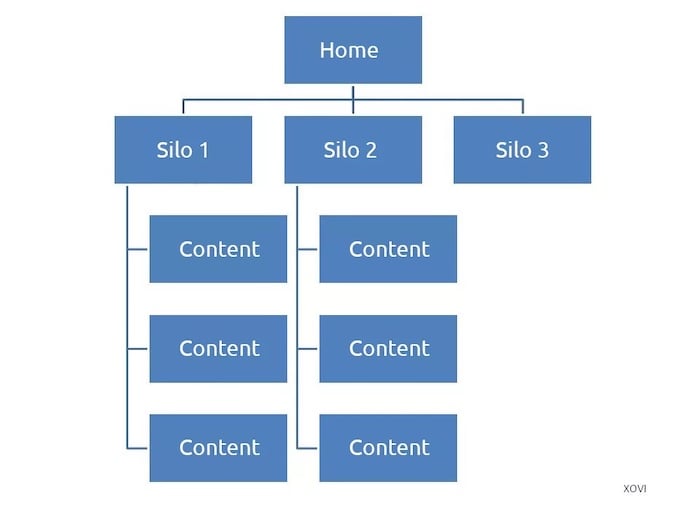
Of course, site architecture and structuring can get far more complex.
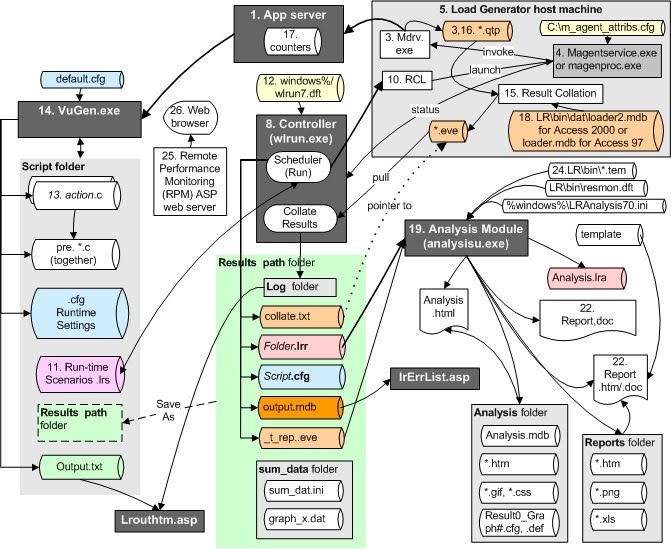
But as long as you have a strong internal linking structure, your website will be crawled, indexed, and ranked by search engines.
Internal linking is also an important part of your user experience, as it allows users to uncover related information or find what they are looking for, which improves dwell time.
5 Reasons Internal Linking Is Good for SEO
Internal linking is one of SEO’s most valuable weapons.
Why? Because it works.
Google’s machine-learning algorithm has come a long way since the early days of SEO. Nowadays, it’s nearly impossible to game the system.
As advanced as the algorithm is, there are still simple changes that will give you an immediate boost in SEO without gaming the search engines.
Internal linking is one of them. It’s not a trick or a gimmick, and it’s certainly not hard to do.
Here are some of the benefits.
1. Helps Google Index Your Site
Google’s crawler follows link paths throughout the internet to find and index websites.
If your website has strong internal linking, the Google crawler has an easier time finding new content you publish.
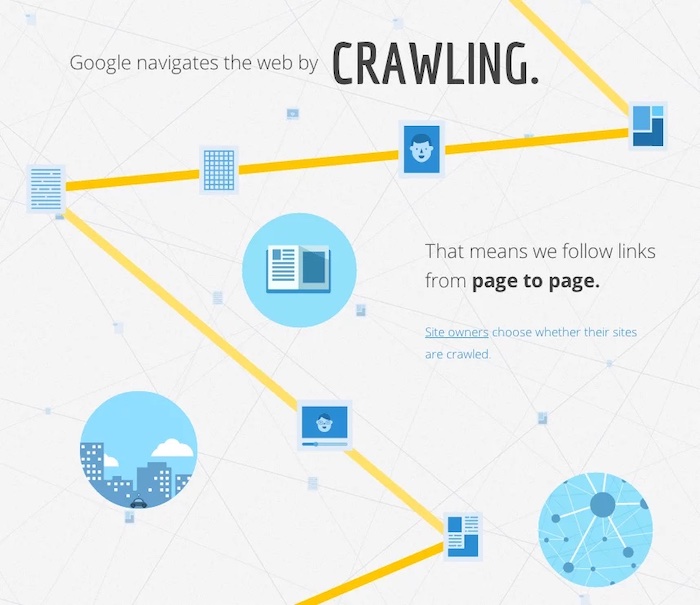
Google’s bots regularly crawl the web for fresh content. If your content is woven together with multiple internal links, crawling happens a lot faster.
As a result, your content will get indexed faster, too.
Improved crawling and indexing can boost your SEO.
2. Increases Backlink-Earning Potential of Deep Content Pages
Take a look at where most of your website’s backlinks are coming from. You’ll probably see a lot of links that send users to your homepage.
When you compare the homepage backlinks to deep page backlinks, this is what you usually see:
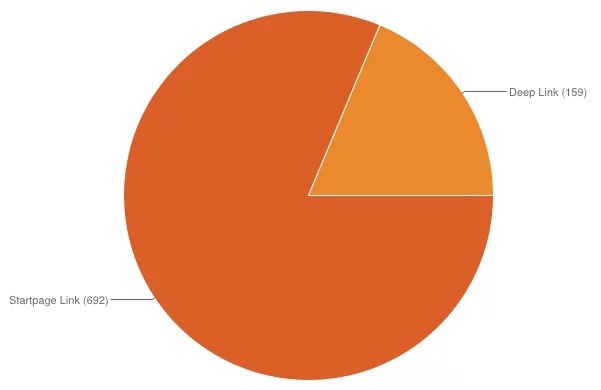
Unfortunately, too many home page backlinks are bad for SEO. We call this over-optimizing, and it should be avoided.
What you want to see is the pie chart reversed. The majority of your external links should point at deep internal pages, not your home page. That’s because the homepage doesn’t generally include the type of detailed information users search for.
When a website doesn’t actively publish and promote new content, its link profile looks like this:
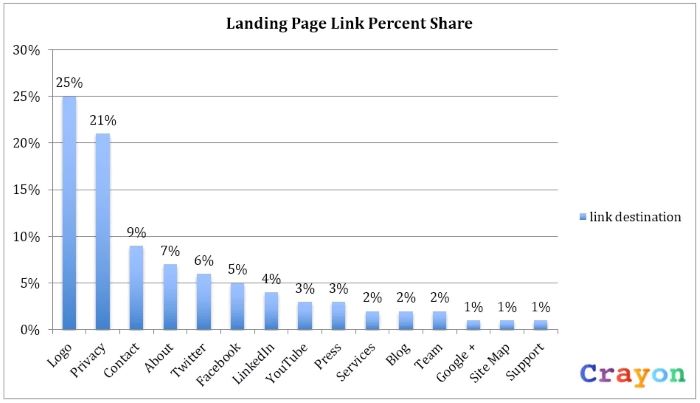
Most of the links on the website go to social profiles or standard pages such as “About” or “Contact.”
This provides very little SEO value to the site.
If you create a strong internal linking structure, you can boost the link juice earning potential of the internal pages, by creating clear click paths and indexation throughout the website.
Why? Because you are increasing the overall crawl priority throughout the site with better distribution of your links.
3. Internal Linking Spreads the Strength of the Site to Internal Pages
When your website receives a link to the homepage, some of the link value is passed on to internal pages.
This is often referred to as “link juice.”
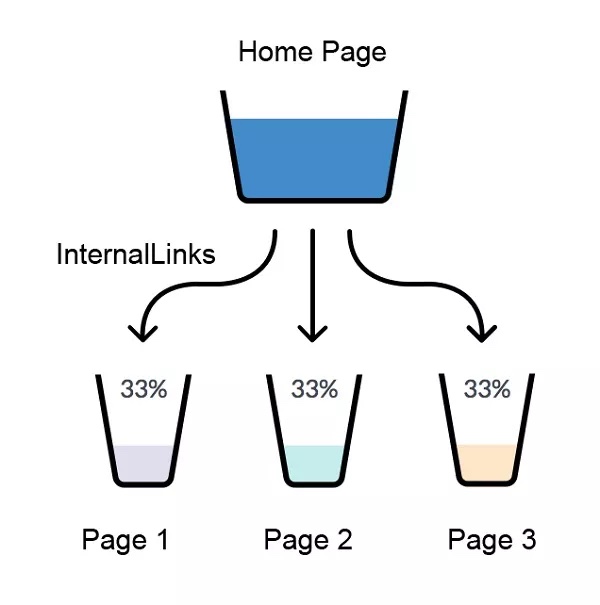
If Page 1 then links to Page 2, the “link juice” flows from Page 1 to Page 2, helping it rank higher in the search engine results page (SERP).
The more tightly-knit a website’s structure (through internal linking), the better the overall site will perform in search.
4. Internal Linking with Optimized Anchor Text Is Good for SEO
An internal link is a simple string of HTML that links one website page to another. It looks like this:
<A HREF = “http://www.example.com/internalpage“> an article on cat food </A>
When you create an internal link with anchor text, as opposed to with an image or navigational text, however, the value of the internal link goes up.
Anchor text improves the value of the link by adding keywords and content to the linking process. Google isn’t just looking at an A HREF tag. They are also looking at the anchor text that is part of that link.
The days of keyword stuffing anchor texts are long gone. But, there is value in optimizing your internal anchor text.
Anchor text that flows well with the overall content, versus over-optimized anchor text, is best.
5. It Provides Value to Your Users
This is the most important point of all. Internal linking is an SEO technique, yes. But, it’s more than that.
Ultimately, internal linking is useful for users.
Think about it this way: When you’re researching a topic, do you check one source or multiple?
Do you enjoy exploring other content that reinforces your understanding of the topic?
Maybe, you just like the writing style of the article you’re reading and want to read more work by the same author.
Internal linking on a site increases the value of each piece of content by backing up claims and leading the user to related information.
While it may not drive conversions directly, internal linking does have a place within the marketing funnel—carrying people to a target destination.
As an added bonus, you can help readers stay on your site longer and increase their trust in you by using internal linking.
SEO is about user optimization, not just technical tweaks and sneaky tricks.
Even if you don’t care about the technical value of internal linking, at least do it for your users.
Internal Linking Best Practices
Now, it’s time to get into the nitty-gritty. How do you do internal linking? What’s the best method for creating the biggest value with links?
There are two things you need in place first:
- Written content on the site: Even if you have a single article, that’s okay. That’s your starting place. If you don’t have any written content but want to create some, check out our The Ultimate Guide to Writing Epic Content.
- Continually writing new content for the site: Getting into a regular publishing schedule is important for internal linking to be effective.
Okay, let’s get into it.
Link to and From Content-Heavy Pages
The best internal links are those that connect one article to another. This creates a strong internal linking structure deep within the site.
If you have good site architecture, you’ll have enough links to the site’s main pages, such as the homepage, About page, Contact page, etc.
You don’t need more links to these pages.
Obviously, if you’re trying to drive conversions using a squeeze page or sales page and the opportunity is right, link to it.
For the most part, I recommend creating links in and among long-form articles. This automatically spreads your internal linking naturally.
Create Text Links Using Anchor Text
What kind of internal links work best?
It’s simple: Links with descriptive anchor text.
What do we mean by descriptive anchor text?
You’re familiar with anchor text, right? An anchor text is the word or words that link to another page. They typically appear as blue text to the reader.
Your internal links should use anchor text, but not just any anchor text will do. Include phrases that describe what the target link is about.
Here are some examples of strong anchor text:
If you wanted to link to an article about the 10 most important SEO techniques, you could do it this way:
Here are a few important SEO techniques you should be using.
If you wanted to link to an article about Google Hummingbird, you could do it this way:
Google’s algorithm has been updated with new machine learning capabilities.
Each of those examples is associating the subject of the link with relevant phrases. The first anchor text contains “10 most important SEO techniques,” which is the subject matter of the article you’re linking to. The second anchor text has the phrase, “Google’s algorithm has been updated,” and the linked article contains information about Google, Hummingbird, algorithms, and updates.
Here are three things not to do with your internal linking:
- Do not try to create an exact match between the anchor text and the link target. This technique, known as “exact match anchor text” has been associated with SEO penalties via the Penguin update. Today’s search engines are sensitive to the regular use of exact match anchor text because it wouldn’t frequently happen in regular content. It appears unnatural because it is.
- Do not use phrases like “click here.” This adds no value. Anchor text needs to be related to the linked page in some way.
- Do not link more than one sentence. An entire hyperlinked paragraph is unsightly and makes for a poor user experience. Just stick to a few words or a phrase when using anchor text to point to an internal link.
Add an Appropriate Number of Links Per Page
When you write a new piece of content, you should include five or more links to old articles. This is really important to your internal linking strategy and how the search engines review and rank your content.
Why?
Websites have a “freshness value” that Google detects and uses as part of its ranking algorithm.
According to Cyrus Shepard, “links from fresh sites [or pages] pass fresh value.”
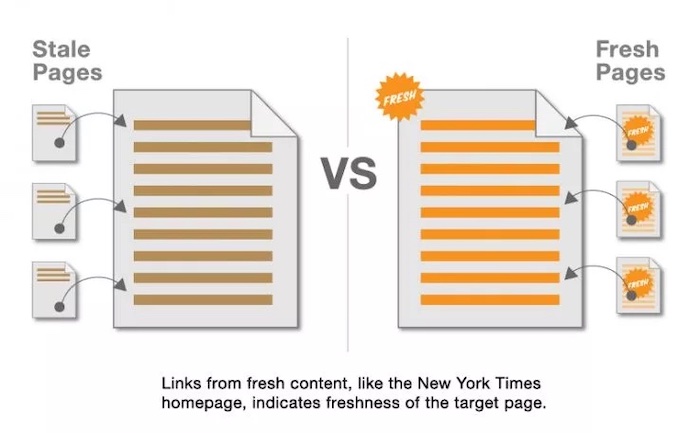
Pinging old pages with a new link helps to boost its likelihood of increasing rank in the SERPs. In the eyes of the search engines, readers who follow your internal links are actually “refreshing” your older content by showing it’s still relevant.
However, be careful not to over-stuff your content with links.
According to Moz, search engine crawlers have a limit of 150 links per page. After that, they stop spidering.
Overstuffing your page with links could negatively impact your SEO.
Be sure to link, but don’t overdo it. This will help both the search crawlers and your user experience.
Update Old Articles With New Internal Links
You’ll get the most power from internal linking if you combine it with another SEO technique—updating old content.
When you update old content, Google’s crawler sees it again, indexes it again, and may increase its ranking in the SERPs.
We always recommend updating your old articles regularly. Here is a good process to follow on your old blog articles:
- Add a new paragraph of content at the beginning, explaining your updates.
- Add several new paragraphs throughout, adding additional or updated information.
- Remove or replace outdated stats or information.
- Add several new internal links to content you’ve recently created.
- Add links in places where it’s logical and value-added.
Remember, internal linking isn’t only about linking new content to older content. It’s also about circling back to older content and creating internal links that connect to your newer work.
You’re accomplishing two things by doing this.
- It updates old content, which improves its ranking value.
- It creates an internal link between an old established page on the site and a new not-so-established page.
Add Links Where It Makes Sense
Now that you’ve learned so much about internal linking, you’re probably wondering where you should put your internal links?
It’s tempting to get lazy and throw them in at the end of an article: “For more awesome content, click here!”
Don’t do that, please. Or at least, don’t do just that.
Instead, look for areas in the content where the subject matter overlaps. These are logical points of connection to create an internal link. For example, you can add links to define complex terms or explain a related topic.
Think of internal links as a reference point that improves the experience of the reader.
Only Add Dofollow Links
Don’t add a nofollow tag to your internal links. Nofollow links do not have any impact on the search engine rankings of the destination site.
On top of that, Google does not transfer PageRank or anchor text across nofollow links. It won’t even crawl them.
While some data from Ahrefs has shown nofollow links can be useful when used externally, there is no reason to use them in your internal linking strategy.
Link to High Converting Pages
Do you have pages on your website that convert visitors more than other pages?
If so, link to these pages.
Some articles in our blog have super high conversion rates. The content is compelling, and the CTAs are so powerful that users convert in droves.
We always make sure to link internally to these pages.
This is where internal linking has more than just SEO value. It can have revenue value, too. The more visitors you can drive to a high-converting page, the more conversions you’ll have.
Take Site Navigation and Information Architecture Into Consideration
Site navigation and internal linking go hand in hand.
Internal links define site architecture and hierarchy by creating funnels that direct users through your website.
Ultimately, this is an important part of your UX/UI and will impact how long people stay on your web pages and how often they come back.
When building an internal linking strategy, consider the most important content on your site and how you’re promoting it.
If you have a piece of cornerstone content that you want more eyes on, point more internal links to it.
Create Lots of Content
The best way to have a healthy internal linking structure is to have lots of internal pages.
When you create lots of content, you’ll have lots of linkable content. The more links to the more places, the better your internal linking strategy will be.
Remember, simply having a lot of web pages doesn’t equal a robust internal linking strategy.
While internal links are essential to your website navigation, repeatedly linking to your homepage won’t move the needle on your SEO score.
Instead, consider writing a blog or creating landing pages that house resourceful content.
Whatever your strategy, do it well and do it often.
Internal Linking Practices to Avoid
Now that you know how to use internal linking correctly, let’s review some of the practices to avoid.
Adding too many links to your content can be detrimental to your score. Remember, Google does not crawl pages that have more than 150 links. It’s also important to note that your header, footer, and menu links are included in your on-page link count.
Don’t overdo it!
Keyword stuffing in anchor text is another internal linking practice to avoid. This black hat tactic was popular in the past, as SEO’s thought it would improve their chances of ranking.
These days, sophisticated search algorithms penalize keyword stuffing in anchor text. So, don’t do it.
Using internal links in header text should also be avoided. Links in headers signal spam to Google crawlers and can negatively impact your SEO.
Finally, be sure to check all of your internal links before posting them. Broken links don’t spread any link juice and signal to Google that your website is low quality.
Internal Linking FAQs
How many internal links should I include per post?
There’s no set number, but 5-10 for every 2,000 words is a good best practice. Remember, Google won’t crawl pages with more than ~150 links, so be careful about overstuffing your content.
Should I add internal links to my pages with more or less traffic?
According to Databox, internal links can spread link juice from low-traffic web pages to high-traffic ones. That being said, it’s also important to point as many links as possible to your cornerstone content so it benefits from increased traffic.
What is an example of internal linking?
Are internal links backlinks?
No, internal links stay within your website domain, they do not come from an external source. Backlinks are external links that point to your domain.
Summary of Internal Linking Guide
Internal linking is a core part of a solid SEO strategy. When done right, it enhances the user experience and can help you rank higher in the SERPs.
While internal links are part of any strong website design, it’s important to find ways to include internal links in your content to ensure you’re getting the most out of your content. Make sure to use optimized (but not over-optimized) anchor tags, and add internal links that provide users with more information about a topic they’re interested in.
What internal linking practices have you found to be the most effective?
See How My Agency Can Drive Massive Amounts of Traffic to Your Website
- SEO – unlock massive amounts of SEO traffic. See real results.
- Content Marketing – our team creates epic content that will get shared, get links, and attract traffic.
- Paid Media – effective paid strategies with clear ROI.
SEO
brightonSEO Live Blog

Hello everyone. It’s April again, so I’m back in Brighton for another two days of Being the introvert I am, my idea of fun isn’t hanging around our booth all day explaining we’ve run out of t-shirts (seriously, you need to be fast if you want swag!). So I decided to do something useful and live-blog the event instead.
Follow below for talk takeaways and (very) mildly humorous commentary. sun, sea, and SEO!
SEO
Google Further Postpones Third-Party Cookie Deprecation In Chrome

Google has again delayed its plan to phase out third-party cookies in the Chrome web browser. The latest postponement comes after ongoing challenges in reconciling feedback from industry stakeholders and regulators.
The announcement was made in Google and the UK’s Competition and Markets Authority (CMA) joint quarterly report on the Privacy Sandbox initiative, scheduled for release on April 26.
Chrome’s Third-Party Cookie Phaseout Pushed To 2025
Google states it “will not complete third-party cookie deprecation during the second half of Q4” this year as planned.
Instead, the tech giant aims to begin deprecating third-party cookies in Chrome “starting early next year,” assuming an agreement can be reached with the CMA and the UK’s Information Commissioner’s Office (ICO).
The statement reads:
“We recognize that there are ongoing challenges related to reconciling divergent feedback from the industry, regulators and developers, and will continue to engage closely with the entire ecosystem. It’s also critical that the CMA has sufficient time to review all evidence, including results from industry tests, which the CMA has asked market participants to provide by the end of June.”
Continued Engagement With Regulators
Google reiterated its commitment to “engaging closely with the CMA and ICO” throughout the process and hopes to conclude discussions this year.
This marks the third delay to Google’s plan to deprecate third-party cookies, initially aiming for a Q3 2023 phaseout before pushing it back to late 2024.
The postponements reflect the challenges in transitioning away from cross-site user tracking while balancing privacy and advertiser interests.
Transition Period & Impact
In January, Chrome began restricting third-party cookie access for 1% of users globally. This percentage was expected to gradually increase until 100% of users were covered by Q3 2024.
However, the latest delay gives websites and services more time to migrate away from third-party cookie dependencies through Google’s limited “deprecation trials” program.
The trials offer temporary cookie access extensions until December 27, 2024, for non-advertising use cases that can demonstrate direct user impact and functional breakage.
While easing the transition, the trials have strict eligibility rules. Advertising-related services are ineligible, and origins matching known ad-related domains are rejected.
Google states the program aims to address functional issues rather than relieve general data collection inconveniences.
Publisher & Advertiser Implications
The repeated delays highlight the potential disruption for digital publishers and advertisers relying on third-party cookie tracking.
Industry groups have raised concerns that restricting cross-site tracking could push websites toward more opaque privacy-invasive practices.
However, privacy advocates view the phaseout as crucial in preventing covert user profiling across the web.
With the latest postponement, all parties have more time to prepare for the eventual loss of third-party cookies and adopt Google’s proposed Privacy Sandbox APIs as replacements.
Featured Image: Novikov Aleksey/Shutterstock
SEO
How To Write ChatGPT Prompts To Get The Best Results

ChatGPT is a game changer in the field of SEO. This powerful language model can generate human-like content, making it an invaluable tool for SEO professionals.
However, the prompts you provide largely determine the quality of the output.
To unlock the full potential of ChatGPT and create content that resonates with your audience and search engines, writing effective prompts is crucial.
In this comprehensive guide, we’ll explore the art of writing prompts for ChatGPT, covering everything from basic techniques to advanced strategies for layering prompts and generating high-quality, SEO-friendly content.
Writing Prompts For ChatGPT
What Is A ChatGPT Prompt?
A ChatGPT prompt is an instruction or discussion topic a user provides for the ChatGPT AI model to respond to.
The prompt can be a question, statement, or any other stimulus to spark creativity, reflection, or engagement.
Users can use the prompt to generate ideas, share their thoughts, or start a conversation.
ChatGPT prompts are designed to be open-ended and can be customized based on the user’s preferences and interests.
How To Write Prompts For ChatGPT
Start by giving ChatGPT a writing prompt, such as, “Write a short story about a person who discovers they have a superpower.”
ChatGPT will then generate a response based on your prompt. Depending on the prompt’s complexity and the level of detail you requested, the answer may be a few sentences or several paragraphs long.
Use the ChatGPT-generated response as a starting point for your writing. You can take the ideas and concepts presented in the answer and expand upon them, adding your own unique spin to the story.
If you want to generate additional ideas, try asking ChatGPT follow-up questions related to your original prompt.
For example, you could ask, “What challenges might the person face in exploring their newfound superpower?” Or, “How might the person’s relationships with others be affected by their superpower?”
Remember that ChatGPT’s answers are generated by artificial intelligence and may not always be perfect or exactly what you want.
However, they can still be a great source of inspiration and help you start writing.
Must-Have GPTs Assistant
I recommend installing the WebBrowser Assistant created by the OpenAI Team. This tool allows you to add relevant Bing results to your ChatGPT prompts.
This assistant adds the first web results to your ChatGPT prompts for more accurate and up-to-date conversations.
It is very easy to install in only two clicks. (Click on Start Chat.)
For example, if I ask, “Who is Vincent Terrasi?,” ChatGPT has no answer.
With WebBrower Assistant, the assistant creates a new prompt with the first Bing results, and now ChatGPT knows who Vincent Terrasi is.
 Screenshot from ChatGPT, March 2023
Screenshot from ChatGPT, March 2023You can test other GPT assistants available in the GPTs search engine if you want to use Google results.
Master Reverse Prompt Engineering
ChatGPT can be an excellent tool for reverse engineering prompts because it generates natural and engaging responses to any given input.
By analyzing the prompts generated by ChatGPT, it is possible to gain insight into the model’s underlying thought processes and decision-making strategies.
One key benefit of using ChatGPT to reverse engineer prompts is that the model is highly transparent in its decision-making.
This means that the reasoning and logic behind each response can be traced, making it easier to understand how the model arrives at its conclusions.
Once you’ve done this a few times for different types of content, you’ll gain insight into crafting more effective prompts.
Prepare Your ChatGPT For Generating Prompts
First, activate the reverse prompt engineering.
- Type the following prompt: “Enable Reverse Prompt Engineering? By Reverse Prompt Engineering I mean creating a prompt from a given text.”
 Screenshot from ChatGPT, March 2023
Screenshot from ChatGPT, March 2023ChatGPT is now ready to generate your prompt. You can test the product description in a new chatbot session and evaluate the generated prompt.
- Type: “Create a very technical reverse prompt engineering template for a product description about iPhone 11.”
 Screenshot from ChatGPT, March 2023
Screenshot from ChatGPT, March 2023The result is amazing. You can test with a full text that you want to reproduce. Here is an example of a prompt for selling a Kindle on Amazon.
- Type: “Reverse Prompt engineer the following {product), capture the writing style and the length of the text :
product =”
 Screenshot from ChatGPT, March 2023
Screenshot from ChatGPT, March 2023I tested it on an SEJ blog post. Enjoy the analysis – it is excellent.
- Type: “Reverse Prompt engineer the following {text}, capture the tone and writing style of the {text} to include in the prompt :
text = all text coming from https://www.searchenginejournal.com/google-bard-training-data/478941/”
 Screenshot from ChatGPT, March 2023
Screenshot from ChatGPT, March 2023But be careful not to use ChatGPT to generate your texts. It is just a personal assistant.
Go Deeper
Prompts and examples for SEO:
- Keyword research and content ideas prompt: “Provide a list of 20 long-tail keyword ideas related to ‘local SEO strategies’ along with brief content topic descriptions for each keyword.”
- Optimizing content for featured snippets prompt: “Write a 40-50 word paragraph optimized for the query ‘what is the featured snippet in Google search’ that could potentially earn the featured snippet.”
- Creating meta descriptions prompt: “Draft a compelling meta description for the following blog post title: ’10 Technical SEO Factors You Can’t Ignore in 2024′.”
Important Considerations:
- Always Fact-Check: While ChatGPT can be a helpful tool, it’s crucial to remember that it may generate inaccurate or fabricated information. Always verify any facts, statistics, or quotes generated by ChatGPT before incorporating them into your content.
- Maintain Control and Creativity: Use ChatGPT as a tool to assist your writing, not replace it. Don’t rely on it to do your thinking or create content from scratch. Your unique perspective and creativity are essential for producing high-quality, engaging content.
- Iteration is Key: Refine and revise the outputs generated by ChatGPT to ensure they align with your voice, style, and intended message.
Additional Prompts for Rewording and SEO:
– Rewrite this sentence to be more concise and impactful.
– Suggest alternative phrasing for this section to improve clarity.
– Identify opportunities to incorporate relevant internal and external links.
– Analyze the keyword density and suggest improvements for better SEO.
Remember, while ChatGPT can be a valuable tool, it’s essential to use it responsibly and maintain control over your content creation process.
Experiment And Refine Your Prompting Techniques
Writing effective prompts for ChatGPT is an essential skill for any SEO professional who wants to harness the power of AI-generated content.
Hopefully, the insights and examples shared in this article can inspire you and help guide you to crafting stronger prompts that yield high-quality content.
Remember to experiment with layering prompts, iterating on the output, and continually refining your prompting techniques.
This will help you stay ahead of the curve in the ever-changing world of SEO.
More resources:
Featured Image: Tapati Rinchumrus/Shutterstock
-

 PPC6 days ago
PPC6 days ago19 Best SEO Tools in 2024 (For Every Use Case)
-

 MARKETING7 days ago
MARKETING7 days agoEcommerce evolution: Blurring the lines between B2B and B2C
-
SEARCHENGINES5 days ago
Daily Search Forum Recap: April 19, 2024
-
SEARCHENGINES6 days ago
Daily Search Forum Recap: April 18, 2024
-

 WORDPRESS6 days ago
WORDPRESS6 days agoHow to Make $5000 of Passive Income Every Month in WordPress
-

 SEO7 days ago
SEO7 days ago2024 WordPress Vulnerability Report Shows Errors Sites Keep Making
-

 WORDPRESS7 days ago
WORDPRESS7 days ago10 Amazing WordPress Design Resouces – WordPress.com News
-

 SEO6 days ago
SEO6 days ago25 WordPress Alternatives Best For SEO















